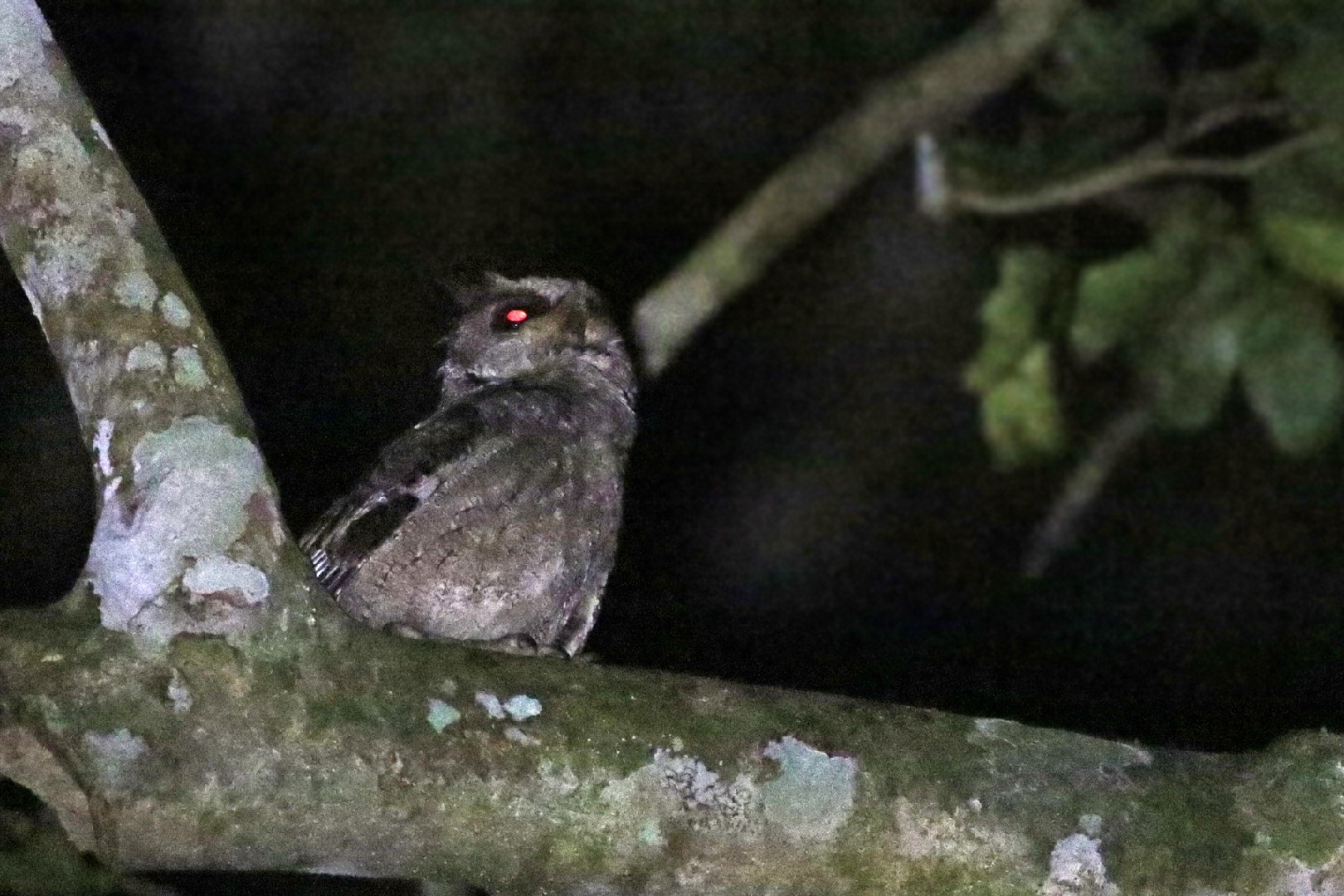Philippine Scops Owl
A species of Scops-owls Scientific name : Otus megalotis Genus : Scops-owls
Philippine Scops Owl, A species of Scops-owls
Botanical name: Otus megalotis
Genus: Scops-owls
Content
Description General Info
 Photo By Charley Hesse TROPICAL BIRDING
Photo By Charley Hesse TROPICAL BIRDING Description
The Philippine scops owl is a mid-sized species measuring around 23-28 cm and weighing around 200-300 grams. A distinguishing feature of this owl is its large ears that are standing upright on its head. They also have big eyes that are dark in the center with a red/orange edge. In general, these owls are covered in dark brown feathers with dark streaks on them. Their ear tuffs also follow a similar pattern. Their forehead is whitish and they have a dark line around their facial disk. There are three subspecies of Philippine scops owl which show three variations in morphology. The smallest morph, Otus megalotis nigrorum, has a reddish brown color, no scapular line, and no feathers on its upper feet. The medium-sized morph, Otus megalotis everetti, also lacks a scapular line and feathers on its upper feet but it has a more greyish brown color. Finally, Otus megalotis megalotis, is the largest of all three varieties and also has a grey brown color but it shows a scapular line and feathers on its upper feet. Other morphological differences between the subspecies can be seen in the length of the tail, the wings, the culmen and the tarsus. These traits are longer in O. m. megalotis and are shorter in O. m. nigrorum. There are no significant difference in morphology between male and female Philippine scops owls although female scops owls tend to be larger in general. The owlets however, present some contrast as they have fluffy rufous feathers. Once they reach the sub-adult age, they are black and greyish-white until they finally reach adulthood and turn brownish. 
Size
28 cm
Nest Placement
Cavity
Feeding Habits
Philippine Scops Owl are nocturnal carnivores, feeding mainly on insects and small mammals. They forage from perches in sparsely wooded areas, using their strong raptorial claws and curved bills in conjunction with acute senses to hunt prey, which they consume whole, occasionally leading to juvenile fatalities.
Habitat
Philippine Scops Owl typically inhabits tropical forests, secondary woodlands, and the edges of forests, favoring the denser regions and lower levels of the understory. These birds are adapted to environments that provide ample cover, such as the root systems of dead trees, where they may roost.
Dite type
Insectivorous
General Info
Feeding Habits
Bird food type
Behavior
Philippine scops owls are sedentary birds with a limited home range. The fact that different subspecies are found on different islands limits intraspecific competition and allows these birds to have a smaller distribution where all the necessary resources are available. 
Distribution Area
Rainforests, mature secondary woodland forests and forest edges are typical habitats in which Philippine scops owls can be found. They are mostly observed in the understory and rarely go above 1000m altitudes, with the exception of individuals which were reported on Mount Data, Luzon. Researchers caught a Philippine scops owl in a net set up at 2m above ground during their study, which confirms that they are mostly understory arboreal species. Otus megalotis is endemic to the Philippine Archipelago but the three subspecies are distributed in different locations across the archipelago. O. m. megalotis species are found mostly in the northern Islands such as Luzon, Marinduque and Catanduanes. O. m. everetti species exist in the eastern and southern islands including Samar, Biliran, Leyte, Mindanao and Basilan. Finally, O. m. nigrorum species are endemic to Negros Island. These owl species are not known to migrate and therefore have a limited distribution. Although they are classified as a species of Least Concern, habitat destruction from deforestation and fragmentation is a major threat to their population as they depend on forests for their survival. 

 Photo By Charley Hesse TROPICAL BIRDING
Photo By Charley Hesse TROPICAL BIRDING Scientific Classification
Phylum
Chordates Class
Birds Order
Owls Family
True owls Genus
Scops-owls Species
Philippine Scops Owl